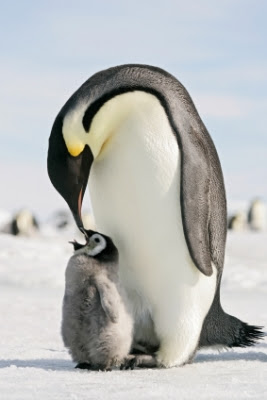 |
| The emperor penguin is the largest of the penguin species and can weigh up to 90 pounds when mature and not fasting to incubate eggs. The fairy penguin is the smallest and weighs only 2 pounds. |
 |
| The light front and dark back coloration of classic penguin plumage is called countershadingand it provides superb camouflage from above and below to protect penguins in the water. |
 |
| There are 18 species of penguin in the world. Penguins are primarily found only in the Southern Hemisphere.In captivity, penguins can be found all over the world. |
 |
| While swimming, penguins will leap in shallow arcs above the surface of the water, a practice called porpoising. This coats their plumage with tiny bubbles that reduce friction, allowing them to swim as fast as 20 miles per hour (32 kph) |
 |
| Penguins’ eyes work better underwater than they do in the air, giving them superior eyesightto spot prey while hunting, even in cloudy, dark or murky water. |
 |
| .Penguins lost the ability to fly millions of years ago, but their powerful flippers and streamlined bodies make them very accomplished swimmers. They are the fastest swimming and deepest diving species of any birds. |


No comments:
Post a Comment